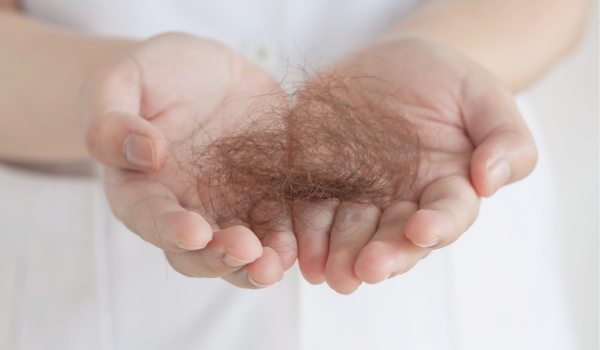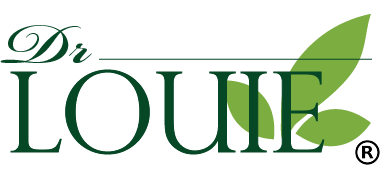
How to prevent summer hair loss
|
Time to read 4 min


|
Time to read 4 min
During summer months, some people shed more hair than usual. This is what is known as “summer hair loss” or “seasonal hair loss.” In fact, a study showed that hair loss in women increased by up to 6% per day in summer, compared to the average hair loss rate. But this is not only the case for women as men are also impacted by summer hair loss.
While it might be concerning, it's generally considered a normal and temporary occurrence. Here are some factors that contribute to summer hair loss.
Your hair doesn't just grow indefinitely. It goes through different phases: a growth phase, a transition phase, and a resting & shedding phase. These phases are influenced by a mix of things like your genes, hormones, and the environment around you.
When summer hits and you're soaking in the sun, your hair follicles, those tiny hair-growing factories in your scalp, are getting the memo as they tend to sync with their environment. That means that more sunlight exposure can mess with the delicate balance of hormones and other things that control hair growth. Plus, those higher temperatures and humidity levels, like the days that we've been experiencing this summer, can give your scalp a bit of a hard time, making it more likely for your hair to take a little vacation – a shedding vacation, that is.
But the GOOD NEWS is that it is often temporary. Most people experience a bit more shedding during certain times of the year, but your hair should get back to its regular groove as the seasons change.
Increase in sun exposure during summer can cause:
Dry and brittle hair: Sun depletes moisture from the hair shaft, causing dry, brittle, and weakened hair
Weaker hair protein: UV rays break down keratin, which is vital to the hair's strength and structure
Damage scalp: Excessive sun exposure could burn the scalp, damaging hair follicles, leading to hair loss.
High heat and humidity can lead to excess sweating and oil production on the scalp. Sweat contains salt and other minerals that, when mixed with sebum (natural oil produced by the scalp), can create an environment that makes hair more prone to breakage. This can weaken the hair shaft and contribute to hair loss.
Furthermore, humidity can cause the hair to absorb excess moisture from the air, leading to swelling of the hair shaft. This swelling can weaken the hair's internal structure and make it more susceptible to damage and breakage.
Lastly, warm and humid conditions can create an environment conducive to fungal and bacterial growth on the scalp. Certain scalp conditions, such as dandruff or fungal infections, can lead to hair shedding.
During summer, we often hit the beach or indoor/outdoor pools. But the chlorine in pools and saltwater from the ocean can be harsh on the hair.
Chlorine, in particular, can strip the hair of its natural oils, leading to dryness, breakage, and potentially increased shedding. It can also disrupt the scalp pH balance, leading to dryness, itching, and irritation. pH imbalance in the scalp can hurt hair follicles, contributing to hair shedding.
When I say sun protection, I don't mean to slather sunscreen on your scalp! It means wearing a wide-brimmed hat or UV umbrella. These can help provide shade for your scalp and hair, reducing direct sun exposure. And try to avoid prolonged periods of direct sun exposure, especially during peak hours 10 am to 3pm. Your scalp, hair AND your skin will thank you.
Use mild, sulfate-free shampoo and conditioner to cleanse your hair and scalp. Try avoiding overly-drying shampoos as they will dry out the scalp and hair that are already damaged by the harsh weather elements. (Click to learn about ingredients that are harming your scalp and hair.)
Try our mild, pH-balanced Daily Shampoo and Hair Treatment. Daily Shampoo is mild yet cleanses the scalp and hair without overdrying. It's so mild that even babies can use it. And you can apply our Hair Treatment on your scalp as well to further nourish the hair. Unlike other conditioners, DrLOUIE Hair Treatment is light-weight and silicone-free, so it won't clog your hair follicles.
Camacho-Martínez FM. Hair loss in women. Semin Cutan Med Surg. 2009 Mar;28(1):19-32. doi: 10.1016/j.sder.2009.01.001. PMID: 19341939. (LINK)
Kunz M, Seifert B, Trüeb RM. Seasonality of hair shedding in healthy women complaining of hair loss. Dermatology. 2009;219(2):105-10. doi: 10.1159/000216832. Epub 2009 Apr 29. PMID: 19407435. (LINK)
Randall VA, Ebling FJ. Seasonal changes in human hair growth. Br J Dermatol. 1991 Feb;124(2):146-51. doi: 10.1111/j.1365-2133.1991.tb00423.x. PMID: 2003996. (LINK)